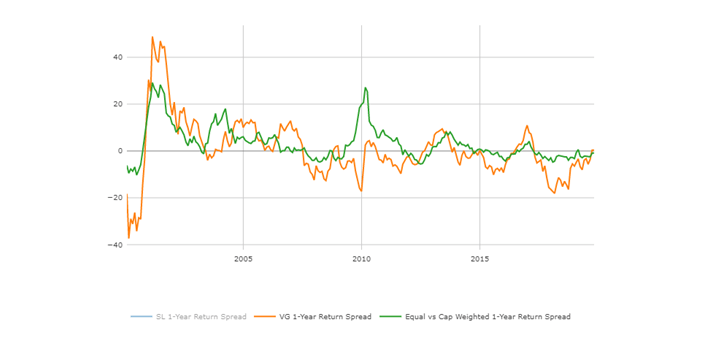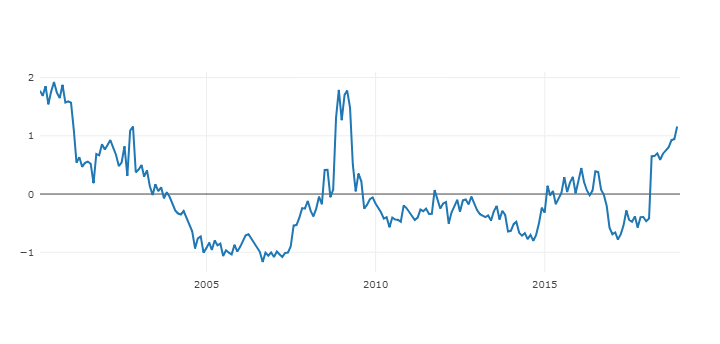US Economics
The economy in the second half of this year may slow down a little. The impact of two powerful hurricanes is yet to be fully assessed. A pause in retail sales and declining industrial production could also contribute to a slower growth in comparison with the first six months. However, usually after hurricanes come and go, rebuilding should contribute to a bump in GDP going forward for several quarters ahead of us.
Hurricane Economics: How Big is the Impact? Per recent study from Goldman Sachs (US Economics Analyst, September 9, 2017) major natural disasters typically lead to a temporary slowdown in most major growth indicators. Such events are often associated with particularly large declines in economic activity, but also sharper subsequent rebounds. Modeling these effects, Goldman estimates that hurricane-related disruptions could reduce 3Q GDP growth by as much as 1 percentage point (making it a 2% growth quarter). The main channels for these GDP effects are consumption, inventories, housing, and the energy sector. However, Goldman believes this weakness should be reversed over the subsequent three quarters, more than recouping the lost output.
Global Economy
Since the mid 2016 the global GDP has delivered consistent above-trend outcomes and upside surprises. Inflation also has risen though still at a subdued pace. The global economy seems to be entering a traditional business cycle upturn as broader growth lifts private sector confidence and asset prices. As recently has been the case, China could be a headwind to a continuous above trend growth, but the major central banks’ commitment towards supporting the recent expansion should be enough to overcome occasional hiccups.
Tax Plan
The White House and Congressional leaders released a tax reform plan, which was largely in-line with expectations. The blueprint, which lacks details at this point, calls for lower corporate tax rates and fewer income tax rates for individuals. The prospect of reform helped fuel a rally in equity markets to close September. Equities gained, led by smaller caps, Energy, and Financials. However, there are many political obstacles to the plan, and the range of opinions on the odds of success is quite wide among analysts, the media, and investors. We will continue to carefully assess the tax package and the potential impact on longer-term market returns.
Equities with Sales Growth
Our investable universe P/E multiple based on the next 12-month earnings growth consensus stands at 18. This is an elevated but not excessive median valuation of the 3,200 companies that we track. According to Goldman Sachs, the S&P 500 currently trades at 18.0x their top-down 2018 EPS forecast of $139 and 17.2x bottom-up consensus of $146. Absent support from improving margins or P/E multiple expansion, equity returns are likely to be dependent on sales growth. It is hard to expect US or World GDP growth, Inflation, US Dollar and Crude Oil dynamics to spark a broad market acceleration in sales growth. However, in our portfolios, we can focus companies with reasonable multiples and above market average sales growth forecasts. Passage of tax reform represents an upside potential to margin and EPS forecasts as well, and we favor companies which could benefit from any form of corporate tax reform.
Bond Yields vs. Equity P/E Multiples
While some market participants believe that rising bond yields will have an adverse impact on equity multiples, hurting stocks, we side with the glass half full camp in that regard. Although equity valuations are at a premium to historical levels, we believe that bond yields can rise without hurting stocks for some time. According to JP Morgan, in the past 10 years, during sharp spikes in bond yields of 50bp or more over one month, the S&P500 was up 90% of the time. Their relative value models between stocks and bonds suggest yields could move up significantly before stocks become expensive. Also, bond yields are moving up for the right reasons. Eurozone manufacturing PMIs just made new cycle highs. Global PMIs remain robust. Q3 EPS delivery could also become a positive catalyst. Also, the price of oil is up 20% over the past three months, a very good sign for inflation to firm-up into year-end. Oil price is typically correlated to S&P500 sales growth.
The information and opinions included in this document are for background purposes only, are not intended to be full or complete, and should not be viewed as an indication of future results. The information sources used in this letter are: Jeremy Siegel, PhD (Jeremysiegel.com), Goldman Sachs, JP Morgan, Empirical Research Partners, Value Line, Ned Davis Research, Citi research and Nuveen.



























































































